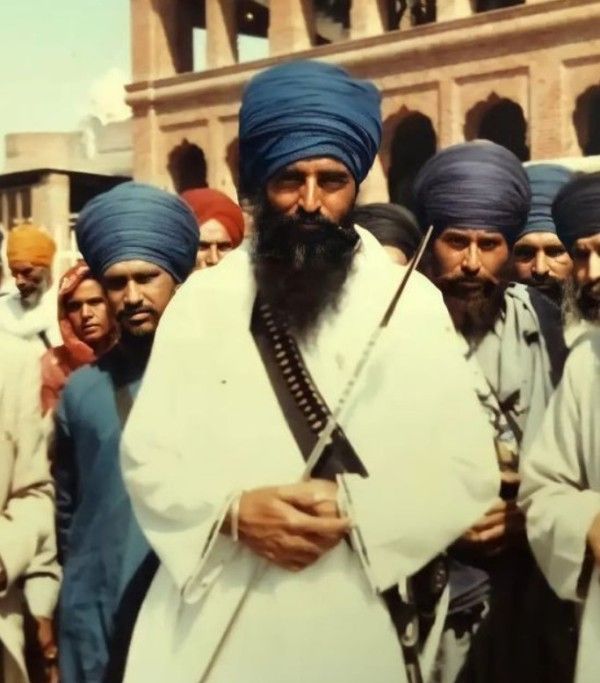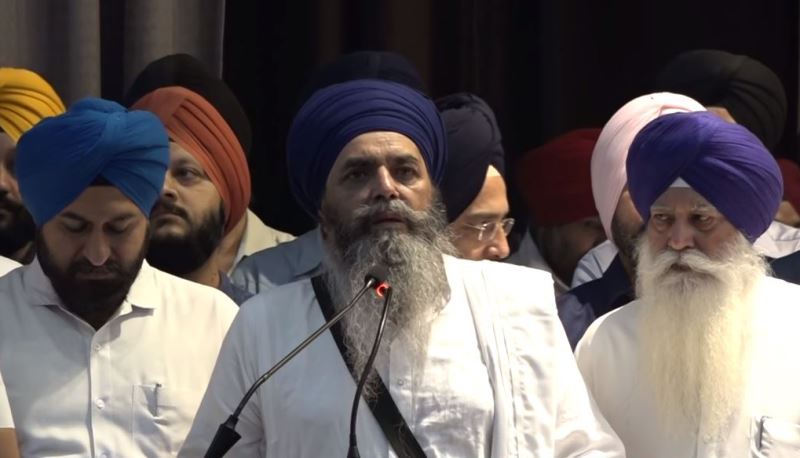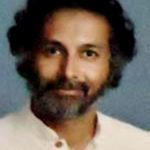Lakhbir Singh Rode Age, Death, Wife, Family, Biography & More
Quick Info→
Relationship Status: Married
Hometown: Moga, Punjab
Age: 71 Years
| Bio/Wiki | |
|---|---|
| Other Names | Lakhbir Singh, Singh Lakhbir Rode, Singh Lakhbir |
| Profession | Khalistani Separatist |
| Personal Life | |
| Date of Birth | Year, 1952 |
| Birthplace | Rode village in Bagha Purana tehsil of Moga district in Punjab, India |
| Date of Death | 1 December 2023 |
| Place of Death | Lahore, Pakistan |
| Age (at the time of death) | 71 Years |
| Death Cause | Heart Attack [1]The Indian Express |
| Nationality | Indian |
| Hometown | Moga, Punjab |
| Religion/Religious Views | Sikhism |
| Caste | He was born into a Jat Sikh family. |
| Relationships & More | |
| Marital Status (at the time of death) | Married |
| Family | |
| Wife/Spouse | Name Not Known |
| Children | He had two sons and a daughter. They live in Canada with their mother. |
| Parents | Names Not Known |
| Siblings | Brother- Jasbir Singh Rode (former Akal Takht Jathedar) |
| Other(s) | Paternal Uncle- Jarnail Singh Bhindranwale (Sikh militant) |
Some Lesser Known Facts About Lakhbir Singh Rode
- Lakhbir Singh Rode (1952–2023) was a Canada-based pro-Khalistan terrorist. He was the head of the International Sikh Youth Federation (ISYF), an organization controversial for its objective to establish Khalistan, an independent state for Sikhs in India. He was the nephew of the infamous Sikh militant Jarnail Singh Bhindranwale and had connections with separatist groups such as Khalistan Zindabad Force and Khalistan Liberation Force. He was listed as an individual terrorist under the UA(P)A. His criminal record includes engaging in armed attacks against law enforcement, staging IED and bomb blasts, carrying out targeted killings of minority community members, involvement in extortion, fundraising for terrorist activities, and instilling fear in the general population. He died of a heart attack in Lahore, Pakistan on 1 December 2023.
- After taking refuge in Dubai, he moved to Canada, where he lived for many years. It was reported that he was living in exile in Lahore, Pakistan when he passed away.
- He started the International Sikh Youth Federation (ISYF) in August 1984 with his brother Jasbir Singh Rode after Operation Blue Star. Operation Blue Star was a military operation by the Indian Armed Forces to remove Khalistani militant leader Jarnail Singh Bhindranwale and his followers hiding in the Golden Temple in Amritsar. ISYF was formed in the United Kingdom as an international branch of the All India Sikh Students Federation (AISSF). The first ISYF conference took place in Walsall, UK.
- Rode also had connections with the terrorist group Lashkar-e-Toiba. He played a significant role in creating Khalistan-Kashmir International, a common platform for Sikh and Islamist extremists. This platform emerged after setbacks in the Khalistan-Kashmir-Muslim militancy (K2M) front during the early 1990s.
- Under Rode’s leadership, ISYF expanded to more than a dozen countries in Western Europe and Canada. The Union government’s case study on Lakhbir Singh read,
ISYF opened its chapters at various places in United Kingdom, Germany, Canada and the United States of America. Lakhbir Singh is allegedly engaged in sending weapons and explosives consignments from across the border to India to carry out terrorist activities in Punjab and to target various Very Very Important Persons (VVIPs) and political leaders.”
- He was involved with the Khalistan Zindabad Force (KZF) as well. It is said that Lakhbir Singh, along with Maan Behanji, played a key role in organizing a significant KZF presence in Birganj, Nepal.
- In November 1998, Lakhbir Singh was arrested after a two-day search in a Kathmandu hotel in Nepal, where authorities found 20 kg of RDX, timer switches, electric detonators, and high-power batteries in his possession. According to reports, during interrogation, he admitted that the shipment was intended for India. Singh also revealed his dealings with three officials from the Pakistani embassy, including one named Asim Saboor. Apparently, the KZF bases in Nepal were established with support from the ISI during the period of Punjab militancy.
- In February 2001, the ISYF was banned in the United Kingdom under the Terrorism Act 2000. Later, in 2002, India also banned the ISYF under the Unlawful Activities (Prevention) Act, officially classifying it as a terrorist organization by the Indian Government.
- Reportedly, Lakhbir Singh Rode was involved in the bombing of Air India Flight 182, a passenger plane that exploded over the Atlantic Ocean on 23 June 1985, while operating on the Montreal–London–Delhi–Bombay route. The key figures behind the bombing were believed to be Inderjit Singh Reyat, a dual British-Canadian national who pleaded guilty in 2003, and Talwinder Singh Parmar, the leader of Babbar Khalsa International. In 2007, it was reported that before his death on October 15, 1992, Parmar had identified Lakhbir Singh as one of the planners of the bombing during his investigation. The Royal Canadian Mounted Police (RCMP) Air India Task Force investigated Parmar’s confession and found it contained false information. In May 2001, an RCMP team went to Pakistan to question Rode, previously ruled out as a suspect in the Air India plot. According to the RCMP report, Rode named Surjan Singh Gill in the conspiracy, stating that Parmar and Bagri lacked the courage to carry out the bombing on their own. Rode also claimed that Manjit Singh shared information about the bombing with him in Pakistan. The RCMP report indicated that Manjit Singh revealed it was Sikh activist Ripudaman Singh Malik who purchased the explosive materials. Manjit Singh also alleged that Malik arranged flight tickets, provided passports, and assisted with loading the luggage at the airport. However, this information wasn’t used in Malik and Bagri’s trial, as they had been declared not guilty two years prior.
- Rode was accused of the bomb blast at a Ludhiana Court Complex on 23 December 2021, resulting in one death and six injuries. According to the National Investigation Agency (NIA), Rode established a terrorist group to carry out explosions and illegally import weapons into India. He collaborated with Zulfikar, also known as Pehalwan, a cross-border smuggler based in Pakistan involved in arms, explosives, and narcotics trade. Other associates included Harpreet Singh (Happy Malaysia), Surmukh Singh (Sammu), Dilbagh Singh, and Rajanpreet Singh. Rode utilized Zulfikar’s smuggling networks to transfer an improvised explosive device (IED) to Gagandeep Singh, who planted the explosive in the complex and lost his life in the process.
- In early 2023, the National Investigation Agency (NIA) took possession of a piece of land owned by Lakhbir Singh in Kothe Gurupura village, Moga. As per an NIA notice, a quarter of the land, measuring 43 kanal 3 marlas, was confiscated based on an order from the NIA court. The court directive, dated October 5, was linked to a case filed by the NIA in Delhi on 1 October 2021. Rode faced charges under various sections, including Sections 3, 4, 5, and 6 of the Explosive Substances Act (1908), Sections 16, 17, 18, 18B, 20, 38, and 39 of the Unlawful Activities (Prevention) Act (1967), Sections 21B, 27A, and 29 of the NDPS Act, 1985, and Section 120B of the Indian Penal Code (IPC). The case pertained to a tiffin bomb blast near Punjab National Bank in Jalalabad town, Fazilka district, Punjab, on 15 September 2021. The NIA investigation uncovered that Lakhbir Singh masterminded the entire conspiracy. According to the NIA, Rode played a significant role in dispatching shipments containing weapons, ammunition, specially crafted explosive devices, grenades, and narcotics to carry out terrorist acts, specifically bomb blasts, to instil fear and terror among the people of Punjab.
- Lakhbir Singh Rode passed away from a heart attack in Pakistan on 1 December 2023. His death was confirmed by his brother and former Akal Takht Jathedar, Jasbir Singh Rode. Virsa Singh Valtoha, the former Khemkaran MLA of Shiromani Akali Dal Badal, paid tribute to Rode on his Facebook page. [2]The Indian Express
References/Sources:









